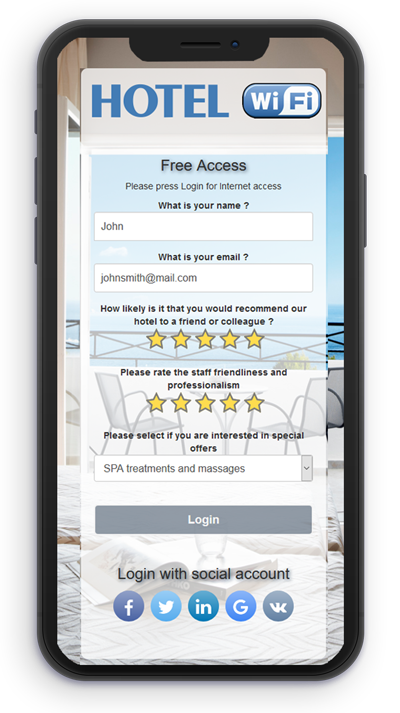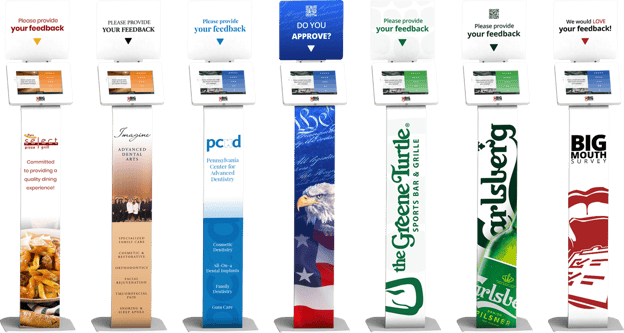How To Go About Asking For Home Repairs Before Purchasin
It's no secret that collecting and analyzing customer feedback can be highly valuable for improving your product or service. However, obtaining that feedback can often prove to be a tricky challenge for many businesses. This is because customers are motivated by their own goals and deadlines, so it's not their responsibility to provide your company with feedback. Many customers are reluctant to fill out surveys or participate in reviews because of the inconveniences these measures cause. Customers have busy schedules, and many won't have time to waste pointing out your product or service's flaws. Others may be skeptical of the questions that you're asking and don't feel comfortable with providing honest information. When asking for feedback, you must consider the best way to approach your customers. To help, we've compiled an extensive list of ways that you can obtain customer feedback: The most frequently used method to request customer feedback is email. The email is sent once a service has been provided or when a product was purchased and delivered to a customer. If you've ever shopped online or stayed at a hotel, you've undoubtedly received a request to rate your experience. Various providers can assist companies with automating this process, and many of them will ensure that reviews are distributed amongst the most important channels, like Facebook, Google, TripAdvisor, and Yelp. Not to be underestimated, SMS is one of the most powerful channels to request feedback from customers. In an age when consumers are always a few feet away from their phones, SMS is a great way to communicate with existing customers and potential leads. With higher open rates than email, SMS is a strong alternative to use when only a phone number is known. Cafes, bars, hotels, and even stores are now choosing to provide free WiFi to attract more customers to their locations. While this is great for the customers, it also presents valuable opportunities to gather feedback. You can require customers to create a free account to access the WiFi, then use the captured email address to request feedback shortly thereafter. Or, you can simply ask how their experience is while they're online. No matter which option you choose, exploiting free WiFi to ask for feedback can be a fair value trade for both business and customer. Image Source Some companies still prefer to do things the old-fashioned way, by using simple, pen and paper feedback questionnaires. While this is undoubtedly the most cost-effective manner to collect reviews, it can also have a lot of hidden costs when it comes to collating and understanding the feedback given. To extract meaningful actions from feedback, the responses often need to be tabulated in a spreadsheet and then analyzed — requiring both significant time and effort. Factoring the salary of a junior staff member that spends only 10 minutes each day to enter responses, can easily exceed $500 per year. Although beacons haven't taken off like the hype predicted, they're still an interesting technology to use when gathering customer feedback. If you have a mobile app, beacons can serve a push notification to users once they arrive in the vicinity of the deployed beacon. This can be a great way to ask users to leave feedback about their in-store experience while they're still there. Image Source On-site live chat tools are becoming more frequent for customer support as well as customer service. Reviewing transcripts of the chats and categorizing any feedback points into categories can help you identify inefficiencies in your business. Frequently mentioned topics tend to be problem areas for your business that can be improved. This not only helps with customer satisfaction but also reduces the required resources for customer support. Although qualitative chat transcripts can be cumbersome to review, they tend to be the most direct feedback from customers that you can receive. Interviewing customers doesn't need to be exclusive to major retailers or market research companies that have big budgets. Frequent and loyal customers are generally very happy to give feedback if you simply ask them. After all, they're the ones who are most invested in your product or service. Try finding some segments that interest you and select various customers who fit these profiles. To increase your potential for success, ensure that the customer is being contacted by a real person as this will not only make them feel like a VIP (and become even more loyal) but will increase your chances that they will provide valuable feedback. If you have an outbound sales team, they're likely making hundreds of calls every day. These logs can be invaluable for not only training purposes, but also as feedback for your product. While they may not be customers (yet), these leads tend to give the most direct feedback about your product since they have no vested interest. First impressions last after all! Even if they haven't completed a trial of your product, listening to their feedback on your presentation can help you overcome any hurdles that may be putting off other potential customers. Want to know how people are using your website and why they aren't converting? Then session replays could be the way to gather the feedback required to overcome these hurdles. Providers such as Hotjar and Yandex record user interaction with your website so you can easily see what they're viewing, clicking on, and interacting with. While this may sound creepy, this type of feedback is invaluable and can help you see your website from your visitor's viewpoint and see issues that you may not otherwise have noticed. Social media has become an inexpensive and efficient way to communicate with your target audience. Customers are already actively participating in communities on Facebook, Twitter, and Instagram, and it doesn't cost your business anything to join in on their conversations. Respond to comments, send direct messages, and engage with your audience to see how people really feel about your company. When your team encounters negative reviews, be sure to respond to them quickly. Active social media users are expecting a fast response, so you have to dedicate a resource to each channel. Closely monitoring your social buzz is a great way to track trends and events that can influence your business. Going through a survey takes away valuable time from a customer's busy schedule. One way to make your surveys worth the investment is to offer a reward for their completion. This makes for a simple, yet highly effective transaction approach to obtaining feedback. Image Source While money or discounts are great, keep in mind that the reward doesn't have to be cash, either. You can incentivize customers using free content that's useful to their workflow. This could be an e-book, an in-house study, or an educational pamphlet that helps them achieve their goals. If there's one thing customers love, it's a chance to win something for free. A great way to collect more feedback is to use your favorite channel to promote a social media contest. In your post, provide a form to collect customer's opinions and specify in the rules that completion is an entry to win something awesome. Customers won't mind taking a moment to fill out a survey, so long as it's not too lengthy and otherwise tedious for the prize value. And make sure you set concrete start and end dates so you can analyze fresh data and determine the winner promptly. Net Promoter Score or NPS® is one of the best ways to obtain and measure customer feedback. It uses a scale of 1-10 to determine whether your customers would recommend your company to other customers. Scores from 0-6 are considered to be negative responses, or "detractors." Scores between 7-8 are neutral, or "passive." Finally, scores of nine and ten symbolize positive experiences and are called "promoters." The best part of NPS is that it's efficient for both the customer and the company. The survey uses only one question which makes it easy to record and analyze results. It doesn't require a lengthy time investment from the customer, and you have a better chance of receiving thoughtful feedback. If you're running an e-commerce website, it's important to find out how your customers feel about their user experience. However, sometimes this can be tricky because a survey can distract customers from making a purchase. You don't want to lose a potential sale because a survey took the lead away from their shopping cart. You can avoid this by displaying your feedback options after a purchase is made. Once the sale is finalized, the customer will be less distracted and will be more interested in providing feedback. This especially comes in handy with transactions that involve higher amounts of emotional investment, like buying a large appliance. While getting immediate feedback is great, it's more useful when the feedback is thoughtful and accurate. Sometimes it takes time for the customer to develop a complete perspective on their buying experience. If you ask for feedback immediately, you're only getting their initial feelings and not how the product or service impacted them over time. If you're noticing customer feedback seems inaccurate, try waiting a week or two before surveying your customers. You may find that the roadblocks challenging them are long-term problems that occur over the continued use of your product or service. Instead of directly asking for feedback, you can monitor what people are posting about your company using third-party sites and apps. For example, tools like Google Alerts and Yext can notify you whenever a review is posted about your company on any website. This can help you discover feedback that may be posted in online communities that your customer service team isn't unaware of. With new internet communities popping up every day, it's important to have a radar that can monitor your company's online buzz. If your company is hosting or attending an event, that's an excellent opportunity to ask customers for feedback. One way to start this conversation is to set up a survey kiosk like the ones in the image below. Image Source Survey kiosks are less intrusive than walking up to a customer and asking them to fill out a form. Instead, customers can simply approach the kiosk, fill out the survey on the tablet, then continue on their way without having to interact with a service rep. This gives customers the privacy to provide candid feedback without feeling pressured by one of your employees who may be eagerly awaiting their response. Customer feedback doesn't necessarily have to be explicit. Your customers' activity on your website can give you valuable information with the aid of a heatmap. Image Source For a more hands-off approach, collect data from where your customer's mouse "clicks" most on your website. This allows you to make informed decisions on your website UX and optimization — comparing and contrasting your most clicked sections to parts that are overlooked. It's clear that customer satisfaction is no longer just the responsibility of customer service teams, but a fundamental element to all departments that have interaction with customers. If you aren't already exploring ways to gather customer feedback at your company it's time to do so. Not only will you cost-effectively generate more customers for your business, but they will become more loyal to your brand with greater lifetime value — which, for marketers, means that we can push for even larger budgets to try new and exciting campaigns. 
Customer Feedback Methods
1. Send a follow-up email.
2. Initiate SMS surveys.
3. Add feedback surveys into your WiFi Network.

4. Create paper feedback cards.
5. Send surveys via a mobile beacon.

6. Review live chat transcripts.

7. Conduct customer interviews.
8. Analyze recorded sales calls.
9. Record website visitor session replays.
10. Monitor social media channels.
11. Offer incentives for feedback.
12. Host a social media contest.
13. Adopt Net Promoter Score.
14. Include post-purchase feedback.
15. Delay asking for feedback.
16. Use feedback monitoring sites.
17. Set up a survey kiosk.

18. Use heatmaps on your website.

Customer Feedback Grows into Customer Satisfaction


Originally published Jul 19, 2021 11:15:00 AM, updated July 19 2021
How To Go About Asking For Home Repairs Before Purchasin
Source: https://blog.hubspot.com/service/strategies-to-obtain-customer-feedback
Posted by: espinozaevinly89.blogspot.com

0 Response to "How To Go About Asking For Home Repairs Before Purchasin"
Post a Comment